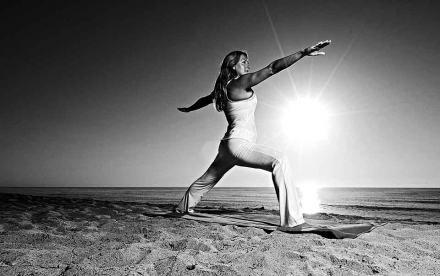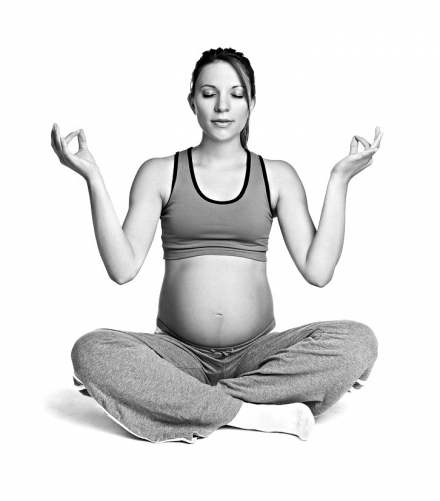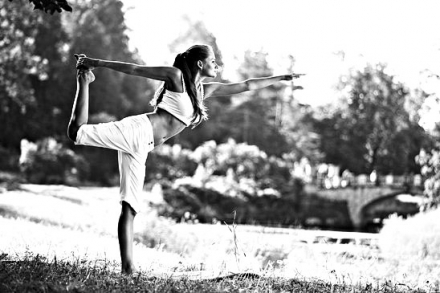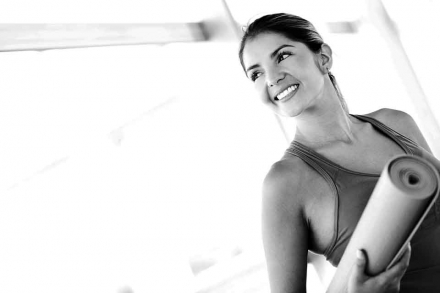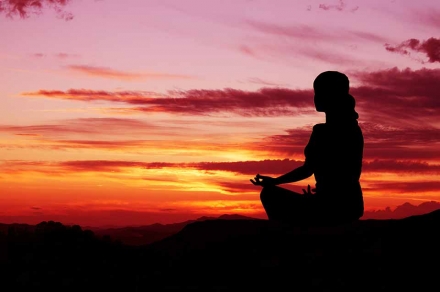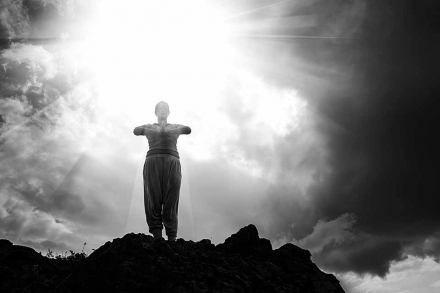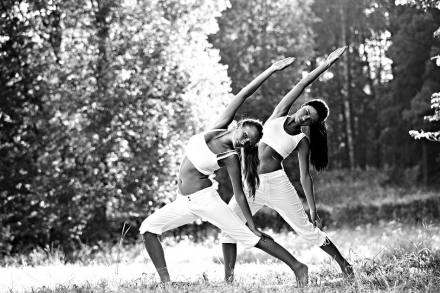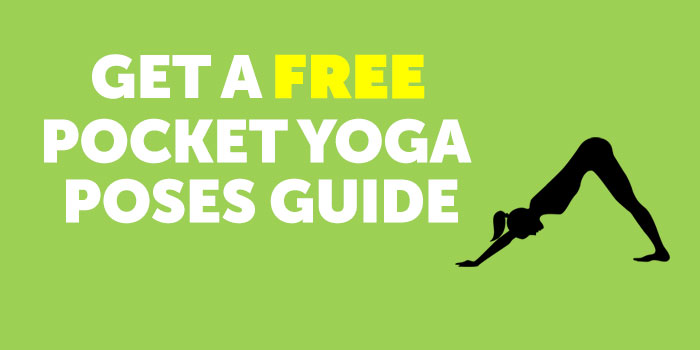So, you want to add some zen into your life, huh? Well, you’ve come to the right place! Welcome to the world of Yoga lifestyle. It’s not just about the poses or the breathing exercises. It’s about embracing a holistic lifestyle that enhances both your physical and mental well-being. Unwind, relax, and let’s explore how easy and fun incorporating daily yoga into your life can be.
Now, don’t be scared off thinking that a yoga routine is all about twisting yourself into impossible shapes or standing on one foot in complete silence for hours on end. Nah, it’s way cooler than that. It’s about finding balance, strength, and peace in the midst of your daily hustle. So, whether you’re a busy bee or a couch potato, we have the perfect yoga plan to fit into your routine. But hey, no pressure! Remember, the goal here is to make you feel better, not stressed. So, let’s get started, shall we?
Develop a Routine
Choosing a time of day and a duration for your routine helps set boundaries. It’s equally crucial to pick the right environment conducive to your activities. Maintain consistency and frequency as it plays a huge role in forming habits. Lastly, don’t forget the importance of tracking your progress; it helps you stay motivated and committed to your routine. Embrace your journey to a more organized life with a smile.
Choose a Time of Day
Brewing from the earlier discussion, let’s delve into the heart of developing a routine. The first step to consider is choosing the right time of day for your activity. The best time to engage in an activity largely depends on your personal schedule and natural body rhythm. Some people are morning birds who are most productive in the early hours, while others are night owls who find their creative juices flowing after sunset.
It’s crucial to identify when you’re at your best and allot that time for your activity. If you’re unsure, experiment with different times and see what works best for you. Always remember, the goal is to choose a time when you can be consistently productive. This way, you’re not fighting against your nature, but instead harnessing it to create a routine that fits comfortably into your daily life. Keep in mind, there’s no right or wrong time, only what works best for you.
Choose a Duration
Having established the importance of having a goal, it’s time to dive into the specifics of your routine. Let’s tackle an important aspect: Choosing a Duration.
When setting up a new routine, it’s crucial to decide on the duration. This will depend on the nature of the routine and your personal preference. Ideally, you should start with a duration that is manageable and realistic. Remember, Rome wasn’t built in a day! Start small and gradually increase your duration to avoid burnout.
For instance, if you’re incorporating exercise into your routine, starting with a 30-minute workout session might be reasonable. Conversely, a study routine might need a longer duration.
Don’t be too hard on yourself, adjustments can be made along the way. It’s all about creating a routine that suits your lifestyle and helps you achieve your goals. Remember, the key is to maintain a balance that promotes growth while preventing exhaustion.
Choose the Right Environment
Breezing through the routine-making process, let’s step into the third crucial aspect: Choosing the Right Environment. It’s like selecting the perfect backdrop for your favorite movie scene. 😊 Your environment plays a vital role in your routine and can significantly impact your productivity.
Look for a place that aligns with your chosen activity. If you’re planning a reading routine, for example, a quiet corner with soft lighting might be ideal. Or perhaps you’re focusing on a fitness routine – then an open space with natural light could be your perfect match. Remember, the key is to find an environment that motivates and inspires you.
Avoid places with too many distractions. You want this to be a place where you can focus and immerse yourself in the routine, free from interruptions. It’s all about creating an environment that encourages a smooth, productive routine. So choose wisely and create your perfect setting!
Get the Right Gear
Let’s dive into the essentials to “Get the Right Gear” for your yoga journey. First up, Invest in a Yoga Mat to create a solid foundation. Next, you might want to Consider Other Accessories to enhance your practice. Don’t forget to Choose Comfortable Clothing for ease of movement. Investing in Quality Yoga Props can provide support and deepen your practice. Lastly, we’ll help you match the right Yoga Gear for Different Styles to ensure you’re well-equipped for any session. Enjoy your yoga journey with the right gear!
Invest in a Yoga Mat
Now that you’ve mastered the art of consistency in your yoga routine, it’s time to make your practice even more enjoyable and effective. Just as a chef needs the right tools to create a culinary masterpiece, you too need the right gear to enhance your yoga journey. Let’s start with the foundation – your yoga mat.
Investing in a good quality yoga mat can be a game-changer. It provides a comfortable, non-slip surface that helps you perform asanas with stability and precision. Plus, it cushions your body, protecting your joints and ensuring your comfort. While there are many mats available, it’s best to choose one that suits your personal needs. Consider factors like thickness, material, texture, and grip.
Remember, your mat is your sanctuary. It’s the space where you connect with yourself, so make sure it’s a place you love to be. So, take your time, do your research and find the perfect mat that makes your yoga journey even more delightful!
Consider Other Accessories
After establishing a routine, it’s time to consider another important aspect of your yoga journey – getting the right gear. Now, let’s focus on other accessories you might need. These can enhance your practice and make it more comfortable and enjoyable.
While a yoga mat is a must, don’t overlook the value of great accessories. For example, a yoga towel can be a game changer, especially if you’re into hot yoga. It provides an extra layer of absorption and increases grip, preventing any sliding or slipping.
Another accessory to consider is a yoga strap. This helps improve flexibility and deepen your stretches. It’s a great aid especially for beginner yogis who are still working on their flexibility.
Last but not least, a yoga block can be incredibly helpful. It assists in alignment, balance, and going deeper into poses.
Remember, these accessories are not necessary, but they can certainly enhance your practice. Happy Shopping!
Choose Comfortable Clothing
Moving from the structure of your practice to the elements that physically support it, let’s talk about the importance of choosing the right gear. More specifically, let’s delve into the topic of choosing comfortable clothing.
When practicing yoga, your clothing plays a key role. You want to wear something that allows you to move freely and doesn’t restrict your flexibility. Comfort is key, and this means choosing materials that breathe and don’t cling when you sweat. Look for clothing specifically designed for yoga or activewear. These garments are typically made of materials like cotton, bamboo, or technical fabrics that are stretchy and moisture-wicking.
Avoid loose clothing that might get in the way of poses or make you feel uncomfortable. Remember, yoga isn’t about looking fashionable, it’s about feeling good in your body and being able to focus on your practice. So, make sure you choose clothes that make you feel comfortable and at ease during your yoga sessions.
Find the Right Instructor/Class
Let’s start by researching different types of yoga to understand what each style offers. Next, consider both in-person and online classes to find the setting that suits you best. Once you’ve done that, choose a style and teacher that works for you. Remember, every instructor has a unique teaching style – it’s important to evaluate the instructor’s teaching style to ensure it aligns with your learning preferences. Finally, don’t forget to try a trial class before you commit. This way, you’re sure to find the right class and teacher for you. Happy yoga-ing!
Research Different Types of Yoga
Now that you’re all set with the correct yoga gear, it’s time to dive deeper into your yoga journey by finding the right class and instructor for you. To begin with, it’s essential to research different types of yoga. There are numerous varieties, each with its distinct focus and benefits. Some, like Hatha, are more gentle and focus on slow movements and breath control. Others, like Vinyasa and Ashtanga, are more vigorous and involve flowing movements. Yin and Restorative types are perfect if you’re aiming for deep relaxation and stress relief. Alternatively, if you’re looking for a more intense workout, consider power yoga or Bikram. Do some research on these different types and try to understand which one aligns best with your fitness goals and comfort level. Remember, yoga is a personal journey, so take your time to find the style that suits you best.
Consider In-Person and Online Classes
Now that you’re all geared up, it’s time to dive into the wonderful world of yoga classes! Whether you’re a fan of traditional in-person classes or prefer the comfort and flexibility of online sessions, there’s a yoga class for everyone.
In-person classes offer a real-time experience with immediate feedback from qualified instructors. You’ll also get a chance to socialize and build a supportive community with other yoga enthusiasts.
On the other hand, online classes can be a fantastic option for those with a busy schedule or prefer to practice in their own space. These classes allow you to learn at your own pace, and you can even pause, rewind, and rewatch the sessions as needed.
Remember, it’s all about what works best for you. So, consider your lifestyle, convenience, and personal preferences when choosing between in-person and online yoga classes. Happy practicing!
Choose a Style and Teacher That Works for You
Just like selecting the perfect set of yoga gear, finding the right instructor and class is another crucial step on your yoga journey. Now, let’s move on to how to choose a style and teacher that works for you.
Remember, yoga isn’t one-size-fits-all. Each style has its unique pace, intensity, and focus. Some styles focus on relaxation and mindfulness, while others are more physically challenging. Research different styles and find out which one resonates with your fitness goals and personal interests.
Next, look for a teacher who aligns with your style preference and learning needs. It’s important to feel comfortable with your teacher’s approach and personality. A good teacher will cater to your abilities and guide you through your yoga journey with encouragement and patience.
So, take your time and explore. You deserve a yoga experience that fits you just right.
Make Time for Meditation
In making time for meditation, first, you need to choose a method of meditation that suits your lifestyle and comfort. Next, it is important to make a commitment to practice, setting aside specific times for meditation. Using a timer can help you stay focused during this period. As you practice, you’ll begin to experience the benefits of daily meditation such as improved mental clarity and stress reduction. Finally, to keep the momentum, consider incorporating mini-meditation breaks throughout your day. This holistic approach will help you embrace meditation as part of your daily routine.
Choose a Method of Meditation
Now that you’ve found the perfect instructor or class, let’s move on to the exciting part – choosing a method of meditation that works for you. There’s a wide variety out there, each with its own unique features and benefits.
Some people prefer guided meditation, where a calming voice leads you through the process. This can be particularly helpful for beginners who are still learning the ropes. On the other hand, if you’re more of a solitary soul, you might prefer silent meditation, where you focus on your breath or a mantra to quiet your mind.
There’s also mindfulness meditation, which encourages you to stay present and fully engage with your surroundings. Or perhaps you’d enjoy movement-based meditation like yoga or tai chi, where the emphasis is on flowing, meditative movements.
Remember, there’s no one-size-fits-all answer here. It’s all about exploring different methods and finding what resonates with you.
Make a Commitment to Practice
After finding the right instructor or class, it’s time to put your knowledge into practice. The next step is to make a commitment to practice consistently. 😊 You know the old saying, “Practice makes perfect.” And it applies to meditation too!
Committing to this routine might feel overwhelming, but remember, you’re investing in yourself. Start with small, achievable goals. It can be as simple as meditating for five minutes every morning. As you get comfortable with this habit, gradually increase your meditation time. This will help you to cultivate a consistent practice without feeling overwhelmed.
Remember, consistency is key in meditation. It’s not about meditating for hours on end, but rather about making it a daily habit. The benefits of meditation are cumulative, and the more regularly you meditate, the more benefits you’ll see. So, make a commitment to practice, and you’ll be on your path to a more mindful and peaceful life.
Set a Timer
Having found the perfect instructor or class, let’s now shift our focus to establishing a consistent meditation practice. A crucial step here is to set a timer. Establishing a specific duration for your meditation can help keep you focused and on track.
I know it might sound a bit technical, but using a timer can really streamline your meditation practice. Select a comfortable length of time that suits your daily schedule. For beginners, start with 5-10 minutes and gradually increase it as you become more comfortable with the practice. Remember, the idea is not to stress but to relax, so pick a time frame that you can manage happily.
There’s a wide variety of meditation apps out there that you can use. These apps often come with built-in timers, making it super easy to manage your meditation time. So, let’s get started. Set that timer and embark on a journey to inner peace!
Set Goals and Track Progress
Setting short-term and long-term goals in your yoga journey is a great start. It’s equally important to track your progress to see how far you’ve come. Celebrate your accomplishments, no matter how small, to keep yourself motivated. Remember, maintaining consistency in your yoga practice is key to achieving your goals. Don’t be afraid to adjust your goals and routines as needed – your journey is unique to you and should serve your individual needs.
Set Short-Term and Long-Term Goals
While taking time for meditation is crucial, it’s equally important to set defined goals for your yoga journey. Let’s delve into the significance of setting short-term and long-term goals.
Incorporating goals into your yoga practice helps maintain focus and motivation. Start with short-term goals that are realistic and achievable within a few weeks or months. This could be mastering a particular pose or dedicating a specific amount of time to practice each day.
On the other hand, long-term goals are your ultimate aims, like achieving a particular level of flexibility or perhaps becoming a certified yoga instructor. These should be ambitious but still within the realm of possibility.
Remember, the journey of yoga isn’t about perfection, but progress. So, be gentle with yourself and set goals that encourage growth and enjoyment. By setting short and long-term goals, you’re creating a roadmap to success in your yoga practice.
Track Your Progress
Just as a seed needs time, care, and consistent nourishment to grow into a beautiful tree, your yoga practice requires similar dedication. Now that we’ve planted our meditation seed, let’s move on to tracking your progress in your yoga journey.
Tracking your progress isn’t just about marking off the days on a calendar. It’s about observing the subtle changes and improvements in your body, mind, and soul. One practical way to track your progress is to maintain a yoga journal. In this journal, you can note your daily practices, the postures you’ve tried, and how you felt during and after the session.
You might also want to include any struggles or breakthroughs you experience. Remember, no detail is too small! This practice will not only help you acknowledge your achievements but also identify areas that need improvement. So, grab a notebook and start your yoga journal today! Your future self will thank you.
Celebrate Your Accomplishments
Transitioning from a calm state of meditation, let’s shift our focus to the importance of celebrating your accomplishments. As you navigate your yoga journey, it’s essential to take time to recognize and celebrate your achievements, no matter how small they may seem.
Remember, every step forward is a victory, so don’t hesitate to give yourself a pat on the back when you finally master that tricky pose or increase your practice frequency. Celebrating your progress not only boosts your morale but also fuels your motivation to continue your yoga journey.
Consider treating yourself to a new yoga mat or a wellness retreat, or even just taking a moment to share your progress with friends or family. Don’t forget to celebrate each milestone as you grow in your yoga practice. After all, self-recognition is a crucial component in maintaining a consistent and fulfilling yoga journey. Keep up the great work!
Incorporate Yoga into Your Life
Let’s incorporate yoga into your life. First, we’ll integrate yoga into your daily activities, making it a habitual practice. Then we’ll help you to practice deep breathing and body awareness throughout the day, which enhances focus. Next is using yoga to manage stress, a proven benefit of this practice. We’ll then delve into the benefits of regular yoga practice, including physical and mental wellbeing. Lastly, we’ll explore combining yoga with meditation for a holistic mind-body wellness approach. Embrace this journey to a healthier lifestyle!
Integrate Yoga into Your Daily Activities
Now that we’ve outlined the importance of setting goals and tracking progress, let’s move into a truly vital and transformative practice – yoga! It’s time to integrate yoga into your daily activities.
You may be wondering, how does one make yoga a part of their everyday routine? Well, it’s easier than you think! Start your day with a few sun salutations to awaken your body and mind. Include yoga stretches during your work breaks to loosen up and refresh yourself. Before going to bed, perform some calming yoga postures to promote a good night’s sleep.
Remember, yoga isn’t just about the poses. It’s about connecting with your body. So, whether you’re cooking, driving, or even working at your desk, try to maintain an upright posture and stay aware of your body’s alignment and movements. This is a simple yet powerful way to integrate yoga into your everyday life. Stay tuned for more tips on how to make yoga a part of your lifestyle!
Practice Deep Breathing and Body Awareness Throughout the Day
While setting goals and tracking progress is vital, it’s equally important to integrate mindfulness activities like yoga into your daily routine. Specifically, practicing deep breathing and developing body awareness throughout the day is a yoga technique that you can and should utilize.
Just as you’d take a quick work break or grab lunch, take a few moments to focus on your breathing. Deep, intentional breaths can help calm the mind and reduce stress. Try to sync your breath with your actions – breathe in deeply when you stretch, and exhale slowly when you relax. This practice not only strengthens your lung capacity but also enhances your overall well-being.
Similarly, being aware of your body, its movements, and the sensations you feel is another aspect of yoga. Listen to your body; it often tells you what it needs. Whether it’s a stretch, a rest, or a moment of peace, be in tune with your body and give it what it asks for. This awareness can improve your overall yoga practice and make your day more mindful and serene.
Use Yoga to Manage Stress
Having set your goals and tracking your progress, let’s now shift our focus to a crucial aspect of yoga: managing stress. Life comes with its fair share of ups and downs, and it’s only through our response to these situations that we can shape our overall wellbeing. Yoga can be an excellent tool in your stress management toolkit.
Practicing yoga postures, known as asanas, can help to relieve physical tension in your body, while deep breathing exercises, or pranayama, can calm your mind. By focusing on your breath, you can bring your attention away from stressors and back to the present moment.
Yoga also encourages a sense of inner peace, helping you to manage emotional stress. It’s like a mini vacation for your mind, right in the middle of a hectic day! Remember, regular practice is key. The more you practice, the better you’ll get at using yoga to manage stress. So start today, and see the difference for yourself.
Take Time to Reflect
Reflecting on your progress is a vital part of any journey, including yoga. As we move forward, we need to set new goals and re-evaluate our routine to ensure we’re on the right track. The practice of after-yoga reflection helps us understand and appreciate our growth. We’ll also look at practical ways to incorporate yoga into your daily life, guiding you to make yoga not just a practice, but a lifestyle.
Reflect on Your Progress
After flowing with your breath in various yoga poses, it’s time to take a step back and soak in the fruits of your practice. Let’s delve into the first aspect of this reflective process: Reflecting on Your Progress.
We often get so wrapped up in achieving our goals that we forget to acknowledge the tiny victories along the way. So, take a moment to pat yourself on the back for every Downward Dog that felt a bit easier, or for every Warrior Pose where you held your balance a little longer. Each of these moments is a testament to your progress.
Has your flexibility improved? Do you feel stronger, physically and mentally? Are you more relaxed and focused? Celebrate these victories, no matter how small they may seem. They are the stepping stones to your overall fitness and wellbeing. Remember, yoga is a journey, not a destination. So, enjoy every moment and celebrate every victory along the way.
Set New Goals
Moving on from the practicalities of incorporating yoga into your daily routine, let’s shift our focus to a more introspective aspect – setting new goals. Just like in yoga, where every pose has a purpose, your journey should also have its own defined objectives.
Are you aiming to master a complex pose? Or perhaps your goal is to deepen your feelings of inner peace and mindfulness? Whatever your target might be, it’s essential to know what you’re working towards. This not only gives your practice direction, but it also brings a sense of achievement and positivity.
Remember, goals are not set in stone. They can change and evolve as you progress in your yoga journey. Feel free to adjust them to suit your current needs and circumstances. This way, you’re always moving forward, even if it’s not in the direction you initially planned. And that’s the beauty of growth and self-evolution.
Re-Evaluate Your Routine
As you transition from the mat to the rhythm of your life, remember, the journey of yoga extends beyond physical exercises. Now, let’s pivot our focus to Re-Evaluating Your Routine.
Sure, you’ve incorporated yoga into your life, but it’s equally important to assess its impact. Remember, yoga embraces flexibility, and so should your routine!
Look closely – has this new habit been more beneficial at certain times of the day than others? Are certain poses more soothing or challenging? Do you feel more peaceful or energized after your practice?
Consider your regular activities. Perhaps, it’s time to shift your yoga sessions to early morning for a refreshing start, or maybe right before bedtime for a serene sleep.
Also, don’t shy away from experimenting with different styles of yoga. Your routine should be as diverse and dynamic as you!
Remember, the goal is to make yoga a joyful and beneficial part of your daily life. So, keep tweaking, and keep growing!
Closing Meditation
Incorporating a daily yoga routine into your lifestyle may seem challenging at first, but with practice and determination, it will become a seamless part of your day. Embrace the yoga lifestyle, and it will reward you with peace, flexibility, and a sense of balance.
Remember, consistency is key in any routine. So set achievable goals, track your progress, and take time to reflect on your journey. The benefits of a yoga routine are worth every bit of effort. Keep practicing, keep growing.
0





